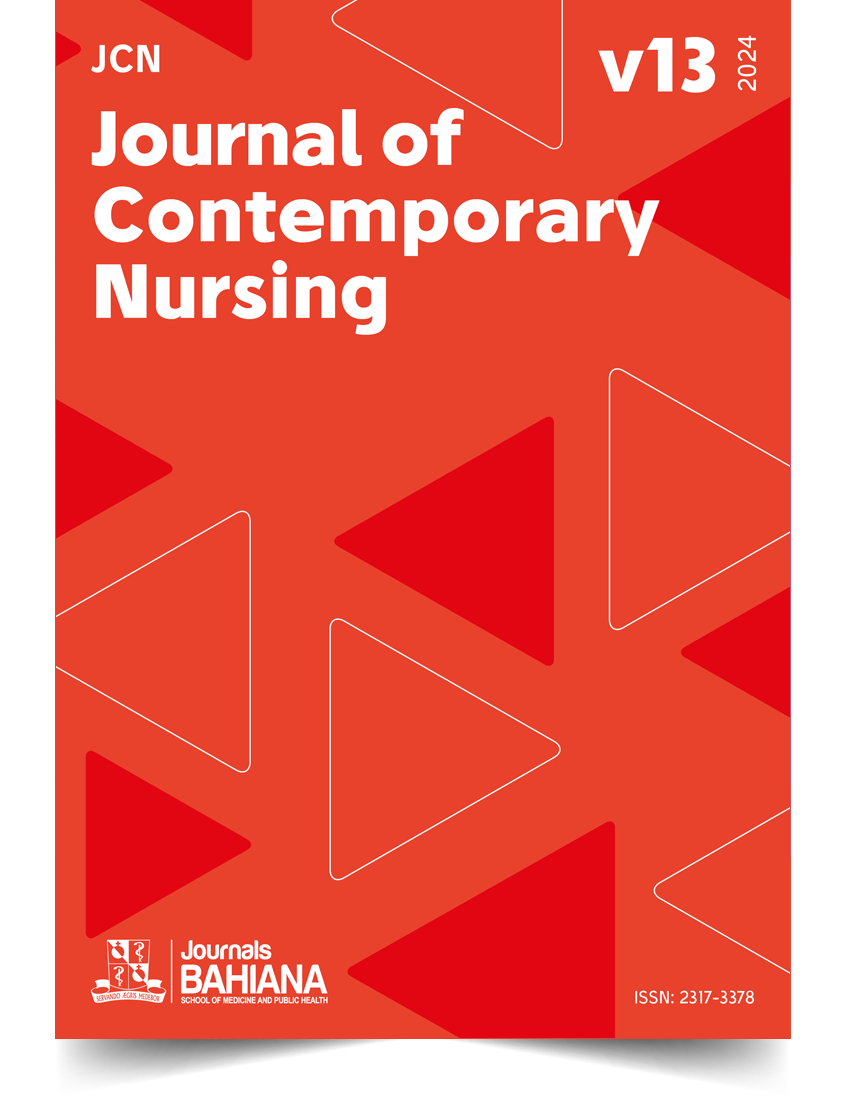Patient safety centers in the state of Espírito Santo, Brazil: potentials and challenges
DOI:
https://doi.org/10.17267/2317-3378rec.2024.e5453Keywords:
Risk Management, Quality of Heath Care, Patient SafetyAbstract
OBJECTIVE: To understand the potentials and challenges of the work of Patient Safety Centers (PSCs) in public hospitals in the state of Espírito Santo. METHODS AND MATERIALS: This is a qualitative study conducted through eight individual interviews with professionals working in PSCs in public hospitals. Subsequently, the data were subjected to thematic analysis. RESULTS: Eight categories emerged, with the first six being: Team turnover; Workload overload; Lack of professional involvement and undervaluation; Lack of professional experience in the field; Challenges in the practical implementation of patient safety actions; and Recognition/engagement. It is worth noting that, of these six categories, only the last one is a facilitator for the PSC's operation. The last two categories listed also serve as facilitators, but they were presented by only one interviewee, namely: Organizational structure of the PSC and Efficient management of action plans. CONCLUSION: Several challenges were identified to be overcome for the National Patient Safety Program to implement its guidelines and, thus, to strengthen the culture of safety in healthcare facilities, ultimately impacting the quality of care provided.
Downloads
References
(1) Resolução da Diretoria Colegiada – RDC nº 36, de 25 de julho de 2013 (Brasil). Institui ações para a segurança do paciente em serviços de saúde e dá outras providências. [Internet]. Diário Oficial da União. 2013 jul. 26. Available from: https://portaldeboaspraticas.iff.fiocruz.br/biblioteca/resolucao-da-diretoria-colegiada-rdc-no-36-de-25-de-julho-de-2013/
(2) Portaria GM/MS nº 529, de 1º de abril de 2013 (Brasil). Institui o Programa Nacional de Segurança do Paciente (PNSP). [Internet]. Diário Oficial da União. 2013 abr. 1. Available from: https://bit.ly/4bHMoT0
(3) Agência Nacional de Vigilância Sanitária (Brasil). Implantação do Núcleo de Segurança do Paciente em Serviços de Saúde – Série Segurança do Paciente e Qualidade em Serviços de Saúde [Internet]. Brasília: ANVISA; 2016. Available from: https://www.gov.br/anvisa/pt-br/centraisdeconteudo/publicacoes/servicosdesaude/publicacoes/caderno-6-implantacao-do-nucleo-de-seguranca-do-paciente-em-servicos-de-saude.pdf/view
(4) Cavalcante EFO, Pereira IRBO, Leite MJVF, Santos AMD, Cavalcante CAA. Implementation of patient safety centers and the healthcare-associated infections. Rev Gaúcha Enferm. 2019;40(esp):e20180306. https://doi.org/10.1590/1983-1447.2019.20180306
(5) Siman AG, Braga LM, Amaro MOF, Brito MJM. Practice challenges in patient safety. Rev Bras Enferm. 2019;72(6):1504-11. https://doi.org/10.1590/0034-7167-2018-0441
(6) Prates CG, Magalhães AMM, Balen MA, Moura GMSS. Patient safety nucleus: the pathway in a general hospital. Rev Gaúcha Enferm. 2019;40(esp):20180150. https://doi.org/10.1590/1983-1447.2019.20180150
(7) Macedo RS, Bohomol E. Organizational structure analysis of the Patient Safety Center in hospitals of the Sentinel Network. Rev Gaúcha Enferm. 2019;40(esp):20180264. https://doi.org/10.1590/1983-1447.2019.20180264
(8) Andrade LEL, Lopes JM, Souza Filho MCM, Vieira Júnior RF, Farias LPC, Santos CCM, et al. Patient safety culture in three Brazilian hospitals with different types of management. Ciênc Saúde Colet. 2018;23(1):161-72. https://doi.org/10.1590/1413-81232018231.24392015
(9) Ministério da Saúde (Brasil), Cadastro Nacional de Estabelecimentos de Saúde do Brasil. Estabelecimentos por tipo – Brasil [Internet]. Brasília: Ministério da Saúde; 2021. Available from: http://tabnet.datasus.gov.br/cgi/deftohtm.exe?cnes/cnv/estabbr.def
(10) Bardin L. Análise de conteúdo. 1 ed. Lisboa: edições 70; 2011.
(11) Nascimento LH, Guerra GM, Nunes JGP, Cruz DALM. Strategies for nurse retention in hospitals: scoping review protocol. Rev Enferm Referência. 2019;4(22):161-8. https://doi.org/10.12707/RIV19033
(12) Lemos GC, Azevedo C, Bernardes MFVG, Ribeiro HCTC, Menezes AC, Mata LRF. The patient safety culture in the scope of nursing: theoretical reflection. R Enferm Cent O Min. 2018;8:e2600. https://doi.org/10.19175/recom.v8i0.2600
(13) Heidmann A, Trindade LF, Schmidt CR, Loro MM, Fontana RT, Kolankiewicz ACB. Contributive factors for the consolidation of patient safety culture in the hospital environment. Esc Anna Nery. 2020;24(1):e20190153. https://doi.org/10.1590/2177-9465-EAN-2019-0153
(14) Burgener AM. Enhancing Communication to Improve Patient Safety and to Increase Patient Satisfaction. Health Care Manag. 2017;36(3):238-43. https://doi.org/10.1097/HCM.0000000000000165
(15) Lee CT-S, Doran DM. The Role of Interpersonal Relations in Healthcare Team Communication and Patient Safety: A Proposed Model of Interpersonal Process in Teamwork. Can J Nurs Res. 2017;49(2):75-93. https://doi.org/10.1177/0844562117699349
(16) Bordignon M, Monteiro MI. Predictors of nursing workers’ intention to leave the work unit, health institution and profession. Rev Latino-Am Enfermagem. 2019;27:e3219. https://doi.org/10.1590/1518-8345.3280.3219
(17) Habahbeh AA, Alkhalaileh MA. Effect of an educational programme on the attitudes towards patient safety of operation room nurses. Br J Nurs. 2020;29(4):222-8. https://doi.org/10.12968/bjon.2020.29.4.222
(18) Costa EAM, Lobão WM, Ribas CLM, Passos NM. Patient safety in health services: an analysis in the city of Salvador, Bahia. Rev SOBECC. 2020;25(1):17-24. https://doi.org/10.5327/Z1414-4425202000010004
(19) Costa EAM, Lobão WM, Riba CLM, Passos NM. Patient safety in large hospitals. Rev Enferm UFPE Online. 2020;14:e243324. https://doi.org/10.5205/1981-8963.2020.243324
(20) Siman AG, Brito MJM. Dimension prescribed and realyity of practices of health professionals in the context of patient safety. Rev Enferm UERJ. 2018;26:e23703. https://doi.org/10.12957/reuerj.2018.23703
(21) Ribeiro R, Servo ML, Silva Filho AM. Patient safety culture in a public hospital. Enferm Foco. 2021;12(3):504-11. https://doi.org/10.21675/2357-707X.2021.v12.n2.4240
(22) Costa BD, Ramos D, Gabriel CS, Bernardes A. Patient safety culture: evaluation by nursing professionals. Texto contexto Enferm. 2018;27(3):e2670016. https://doi.org/10.1590/0104-070720180002670016
(23) Schmitt MD, Costa DG, Massaroli A, Lorenzini E, Lanzoni GMM, Santos JLG. Analysis of theses and dissertations on risk management in the health area in Brazil. Rev Min Enferm [Internet]. 2020;24:e1352. Available from: http://www.revenf.bvs.br/scielo.php?script=sci_arttext&pid=S1415-27622020000100271
(24) Levine KJ, Carmody M, Silk KJ. The influence of organizational culture, climate and commitment on speaking up about medical errors. J Nurs Manag. 2020;28(1):130-8. https://doi.org/10.1111/jonm.12906
(25) O’Donovan R, Ward M, Brún A, McAuliffe E. Safety culture in health care teams: A narrative review of the literature. J Nurs Manag. 2019;27(5):871-83. https://doi.org/10.1111/jonm.12740
Downloads
Published
Issue
Section
License
Copyright (c) 2024 Flávia Batista Portugal , Shaiane Coslop , Maysa Silva Castelar Costa , Kallen Dettmann Wandekoken

This work is licensed under a Creative Commons Attribution 4.0 International License.
This work is licensed under a Creative Commons Attribution 4.0 International License.



